Clay, a humble material found abundantly in nature, holds within its earthly embrace the remarkable ability to be molded into countless forms by skilled hands. The 7 stages of clay represent a transformative process that mirrors life itself, each step offering insights into the alchemy that occurs when human creativity meets natural elements.
From the initial gathering of raw clay from the earth’s depths to its meticulous preparation through wedging and kneading, each stage in this enchanting process unveils layers of potential waiting to be unleashed by the artist’s touch.
Following are the 7 stages of clay.
- Dry Clay
- Slip Clay
- Plastic Clay
- Leather Hard Clay
- Bone Dry Clay
- Bisque Clay
- Glazeware Clay
Dry clay
Dry clay is in powder form. The naturally occurring material has less weight and can be easily stored as compared to other types of clay. Clay at this stage does not grow mold or bad due to its natural dry state. Dry clay comes in different forms such as kaolin, bentonite, and montmorillonite, each with unique properties and benefits.
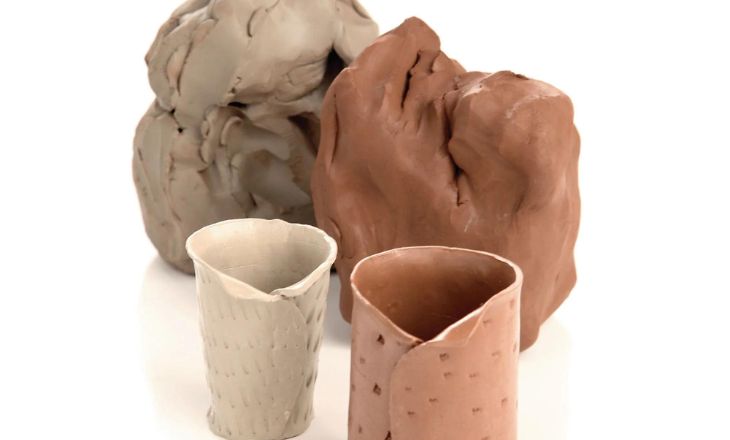
- Kaolin is a type of white clay used in the manufacturing of paper, rubber, and various cosmetics.
- Bentonite is used in various industries like drilling and construction.
- Montmorillonite is used in various industrial applications such as drilling muds for oil and gas wells.
There are four main types of clay:
- Earthenware
- Stoneware
- Porcelain
- Ball clay
The usage of clay depends upon what you want to make and which type of kiln you are using. Dry clay is the foundation clay.
Slip Clay
At this stage, water is added to clay and its consistency is just like a cream or paint. The slip clay is used for various purposes:
- As an adhesive to stick clay together or use as a repair tool.
- It can be easily applied to molds or used for casting.
- It is an ideal choice for coating surfaces such as metal or glass.
- As an adhesive to stick clay together or use as a repair tool.
It is a fundamental element in material crafting and artistic expression.
Plastic Clay
Plastic clay is a workable stage of clay. At this stage clay is flexible and you can mold it to any shape. When clay has been shaped into an object, it is known as greenware.
It can be shaped and formed through hand-building techniques. The grog content is a granular material that adds strength and stability to the pieces, making them durable and resistant to cracking during the drying process.
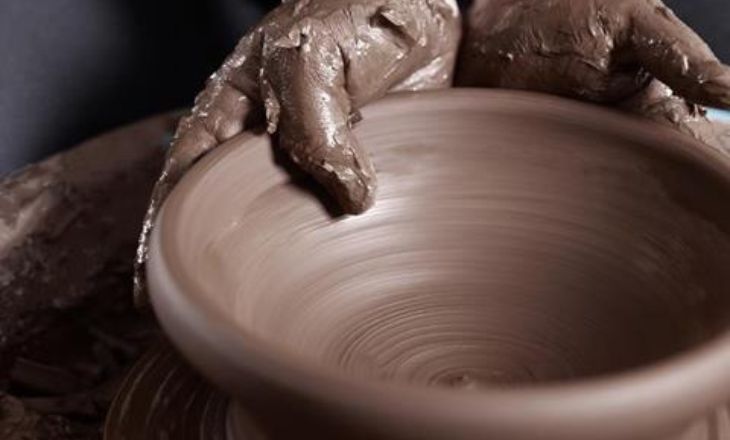
Plastic clay can be created from dry clay by adding some water. Slip clay can be turned into plastic clay by removing some water. This is done by pouring this mixture on the wheel until water has not been absorbed.
Leather Hard Clay
At this stage, clay is in dry form and will not be marked when touched. Once the greenware stage is reached, the clay is still in a delicate state known as leather hard. At this point, it’s firm enough to hold its shape but still porous and malleable. This stage is important for adding intricate details or carving designs into the surface, a technique known as sgraffito.
Potters can trim excess material and clean up any imperfections that may have emerged during shaping. Sgraffito adds depth and texture to pottery by allowing artists to create complex designs. The texture of the clay will not be too wet or too dry and it will be difficult to attach things e.g. handles.
Bone Dry Clay
The bone-dry stage of clay pottery is a critical phase in the creative process, where the clay has been shaped and left to air dry until it reaches a state of stiffness without any moisture. This process takes a week or longer to dry depending on the climate. This provides a unique opportunity for artists to experiment with layers and textures, creating wonderful designs.
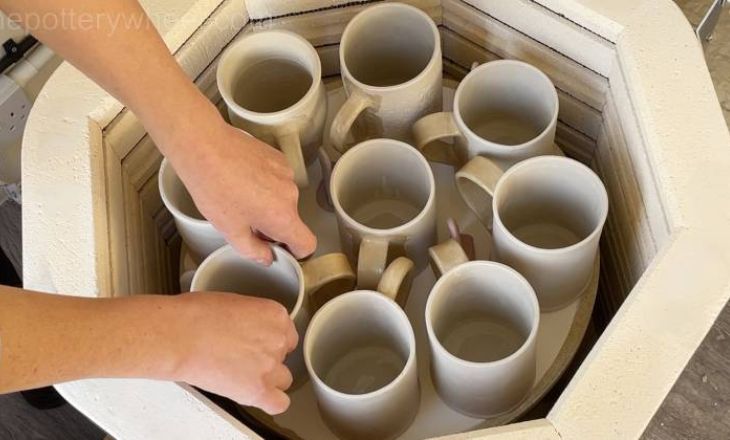
At this stage, you can still recycle your clay but once you fired it in a kiln you can’t reverse it to the previous stage. You can apply underglaze at this moment before firing and make sure that the piece is thoroughly dried. Fired clay that is not completely dried can explode in the kiln through expansion so be careful before firing.
Bisqueware Clay
As the bisque ware emerges from the kiln, it undergoes a transformative process when glazing takes place. Bisqueware removes impurities from the clay. It is at this moment that the raw, porous surface of the pottery becomes a canvas for creativity and expression.
This is the best stage for applying glaze. Clay is harder than hard bone clay but is still porous enough to absorb glaze. Once glazed, the bisque ware returns to the kiln for firing, where it reaches its final phase of hardening.
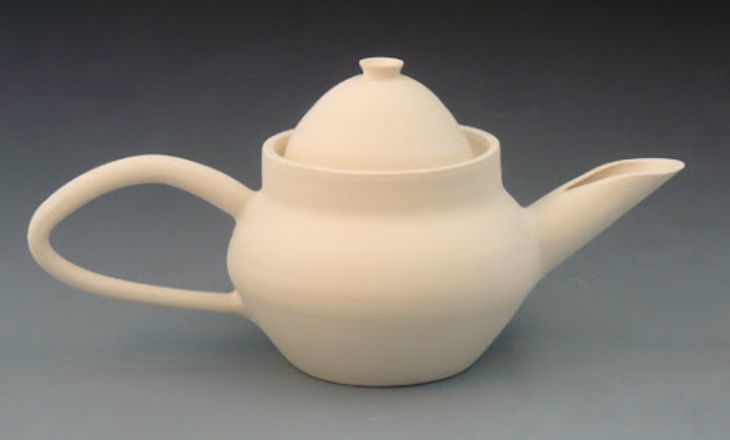
This crucial step ensures that the glaze fuses with the pottery body, creating a long-lasting finish that will withstand time and use. The hardened bisque ware expresses both strength and beauty.
Glazeware Clay | The 7 stages of clay
At this stage, clay has been fired with the glaze. Glazing firings can be done at different temperatures e.g. low mid or high temperatures. It is better to know about the type of clay that you have and then match the firings to the temperature of the clay. This step is important in the preparation of vessels that are used to hold water or used as functional utensils.
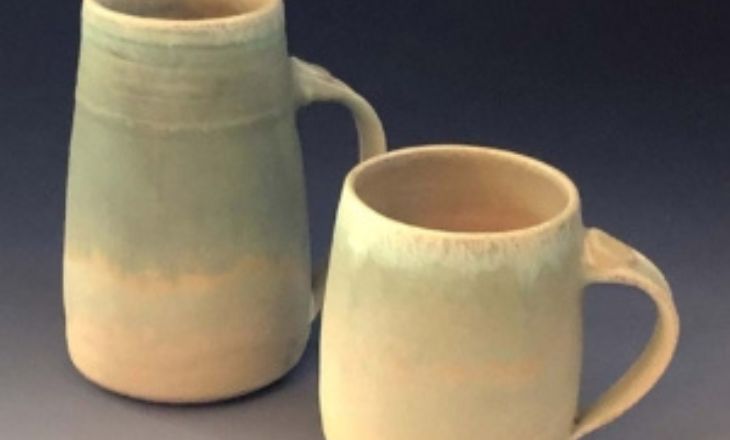
Low fire: It is usually cone 04. The average temperature for low-fire clay is 945F. If your clay is low-fired and you give it a high temperature, it will melt in the kiln.
Mid-fire: Firing at cone 5 or 6. The average temperature is around 2197F.
High fire: The high fire is around cone 10. The temperature is around 2345F. When you fire cone 10 at a lower temperature, your clay particles will not fuse and may not be waterproof. The glazes create beautiful colors and patterns.
CONCLUSION
Understanding the 7 stages of clay is crucial for anyone working with this versatile material. Each stage plays a vital role in the overall process of creating pottery, sculpture, or any other clay-based artwork. By familiarizing yourself with these stages – from raw clay to fired masterpieces – you can enhance your skills and create more successful pieces.
Remember that practice and patience are key as you navigate through each stage, allowing yourself to learn and grow as an artist. So, whether you’re a beginner or a seasoned pro, take the time to appreciate the journey of working with clay and see where your creativity takes you next.
FAQs
What Are The 3 Main Types Of Clay?
The three main types of clay are kaolin, ball clay, and fireclay. Kaolin, also known as china clay, is a white clay that is often used in the production of porcelain and ceramics due to its fine particle size and plasticity. Ball clay is a secondary clay that is typically darker in color and has higher plasticity than kaolin. It is commonly used in the production of pottery, tiles, and sanitaryware. Fireclay is a type of clay that can withstand high temperatures without deforming or melting.
What Is Clay Formula?
Clay minerals are naturally occurring materials that are composed of various combinations of silicon, aluminum, magnesium, iron, and oxygen. The chemical formulas provided in the question represent the idealized composition of some common clay minerals. For example, kaolinite is represented by the formula 2SiO2 Al2O3 2H2O, indicating that it consists of two parts silicon dioxide (SiO2), two parts aluminum oxide (Al2O3), and two parts water (H2O).
